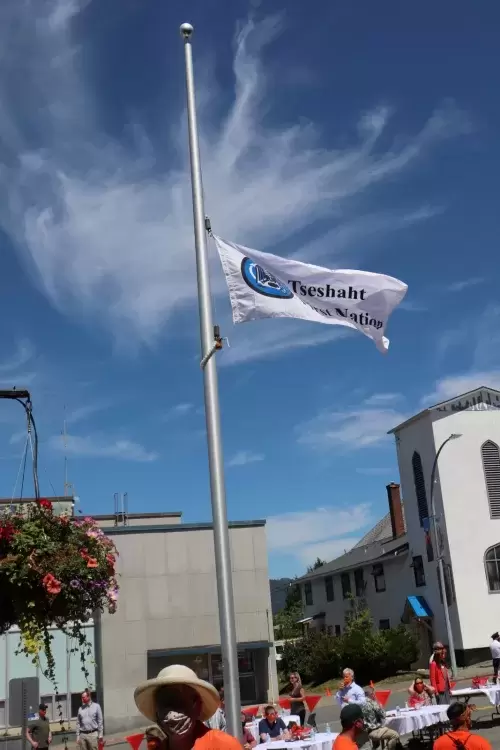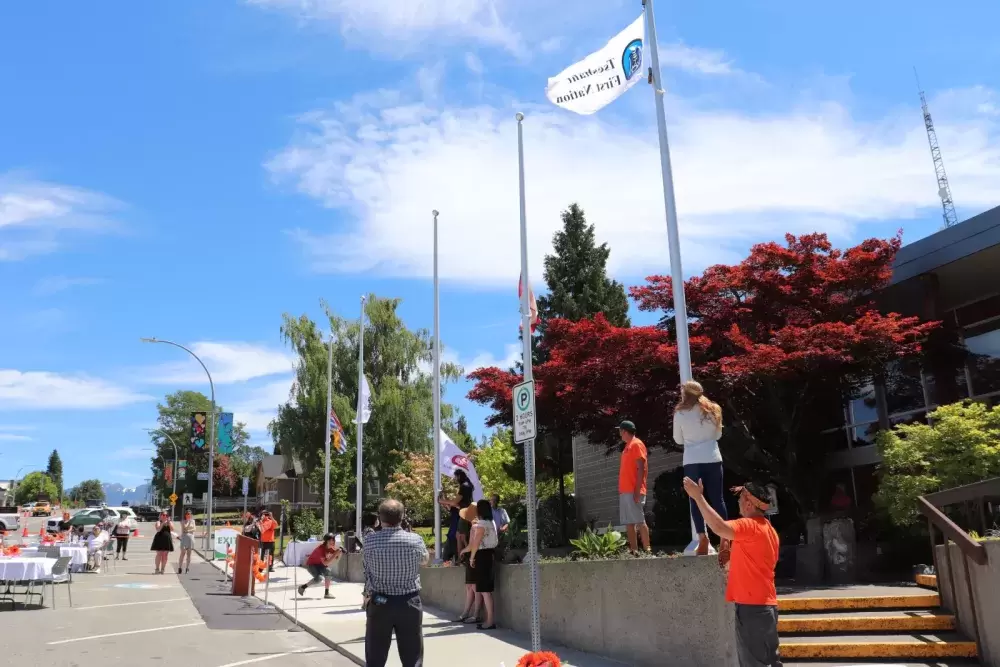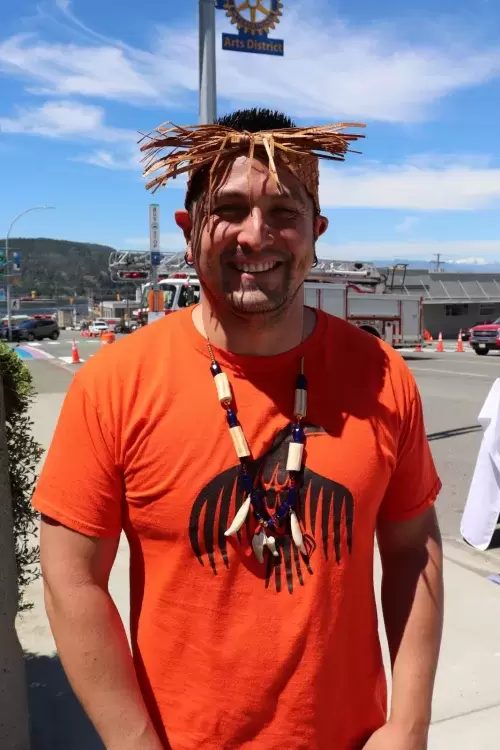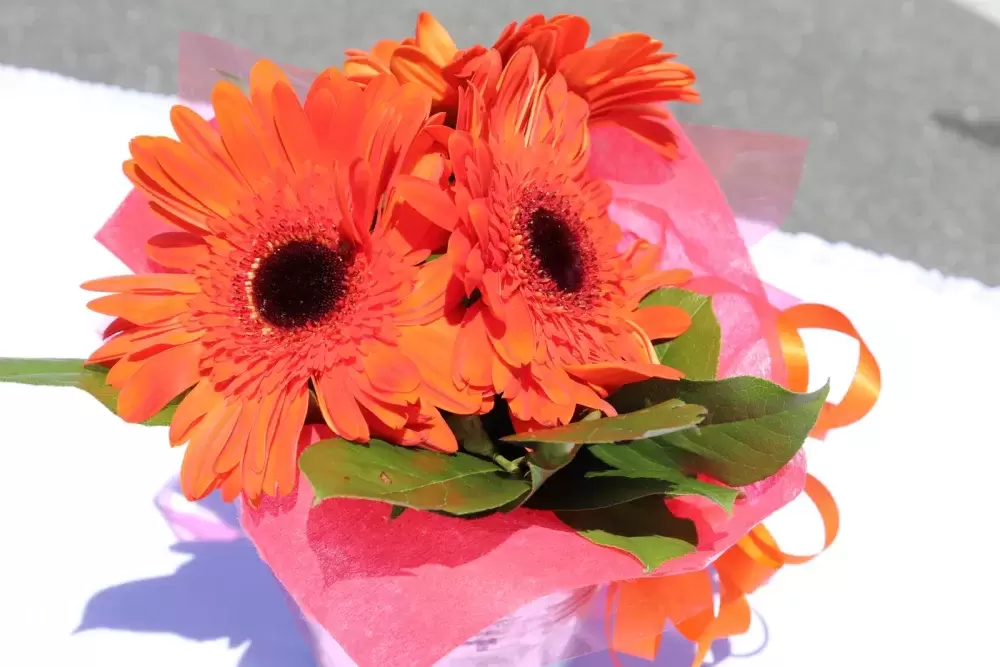A block of Argyle Street in front of Port Alberni City Hall was closed off to traffic for a very special event on June 21, 2021. The street was filled with tables and decorated in orange as the City of Port Alberni celebrated National Aboriginal Day.
They announced, in the spirit of reconciliation, that they would permanently fly Hupacasath and Tseshaht flags at City Hall.
Port Alberni Mayor Sharie Minions noted that the flags of the two First Nations, whose traditional territories make up Port Alberni, have been flown on National Aboriginal Day in the past but they were taken down at the end of the day.
Emcee and City Manager Tim Pley, who is not Indigenous, introduced himself in the Nuu-chah-nulth language. He acknowledged that Port Alberni is within Tseshaht and Hupacasath territories and called the raising of the flags a small but very important step toward reconciliation.
He called for a moment of silence to allow people to reflect on the lives of the hundreds of children that were taken from their families, never to return and for those that have yet to be found. The color orange was selected for decorations and clothing in remembrance of the children whose unmarked graves were found at Kamloops Indian Residential School in early June.
Mayor Minions said that the flag raising ceremony had its beginnings in a reconciliation walk that ended at City Hall a few years before. There were more than 200 people that took part in the walk from Harbour Quay to City Hall on Mar. 27, 2017. The participants included people from Tseshaht, Hupacasath and the greater Port Alberni community.
From that walk, a reconciliation committee was formed, made up of Tseshaht, Hupacasath, Indigenous residents from other nations and non-Indigenous locals. According to Minions, the committee came up with 27 recommendations to advance reconciliation in the city.
The inclusion of the Indigenous flags at City Hall is one of those recommendations that they hope will lead people on the path to healing and respect, said Minions.
MLA Josie Osborne said it is significant to see the relationship-building between the city and local First Nations. National Aboriginal Day, she said, is a day to celebrate culture and the contributions of Canada’s Indigenous peoples.
But it’s also a time, Osborne noted, for Canadians to recognize that racism and discrimination against Indigenous people still exists.
“This is a day of reflection, it’s a time for settlers to be unsettled,” said Osborne.
She asked that people look within at their own biases and colonial history.
“We have a lot of work to do,” she said. “It’s hard work, but it’s rewarding work and it’s time to do better.”
Jolleen Dick, a member of Hupacasath elected council, reminded people that it’s not just National Aboriginal Day, but the month of June is Aboriginal month. She noted that the First People’s Cultural Council have language learning tools available on their website.
“Maybe more people can learn (Nuu-chah-nulth language) and we can have a discussion in our language,” she suggested.
Tseshaht Chief Councillor Ken Watts also introduced himself in Tseshaht language. He reminded people that Alberni Indian Residential School was located in Tseshaht territory and they have some important work to do.
He talked about the progress being made on the road to reconciliation with the city.
“Down the road at Harbour Quay there is a stop sign in our language and mural…and A.W. Neil school has been renamed,” he noted.
Mayor Minions said she is most proud of the relationship building that has been taking place.
She acknowledged the sadness of the Kamloops Indian Residential School discoveries and how it has sparked dialogue among survivors.
“Hearing those stories is difficult, but it is important to hear those stories because it helps us to understand,” she said. “If we want our future to be better than the past, we have to engage.”
Looking to the future, Ken Watts said, “I hope we raise children that will end racism.”






